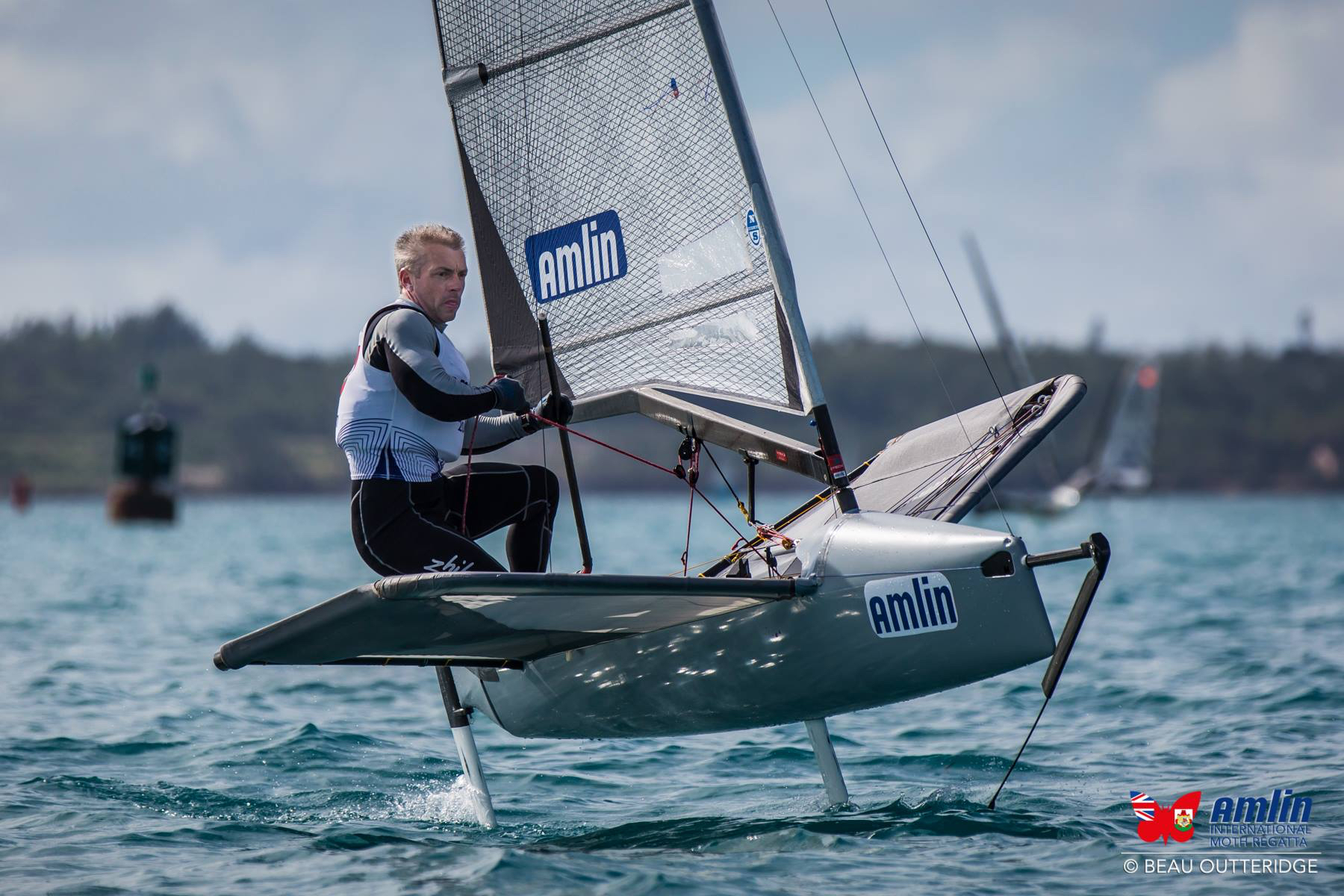Do you, like I do, watch the new generation of foiling Moth sailors with a mixture of open-mouthed wonder and unadulterated pure green envy as they defy the laws of physics to zip effortlessly through the air?
I tracked down one of the class’s most successful protagonists, British sailor Rob Greenhalgh, to find out what it takes to master the foiling Moth.
Greenhalgh has a string of 18-Foot Skiff world championship titles to his name but is perhaps better known for his offshore sailing. He has competed four times in the Volvo Ocean Race and won it once.
Back in 2003 he was a helmsman aboard 140-foot Mari Cha IV that set a new transatlantic monohull record time between New York and England.
Just few weeks ago he broke that record as part of the crew of the 100-foot Comanche which scorched across the Atlantic in six days 17 hours and 52 minutes – more than a day quicker.
It was after completing a Volvo Ocean Race in 2012 that Greenhalgh committed himself fully to learning how to sail a Moth.
“I didn’t want to mess about doing it half-heartedly,” he told me. “I wanted to get good and that means committing lots of time to it.”
Encouragingly for all of us wannabe foilers, Greenhalgh maintains that anyone should be able to sail a Moth.
“There’s a lot of new skills to learn, but ultimately it is still just sailing,” he said. “There’s nothing more to it. If you can sail a Laser, you can sail a Moth.”
That said, Greenhalgh confesses that his first foiling forays were less than spectacular.
“When I first got in it, I was hopeless. I spent a whole July swimming around Stokes Bay [ed. note: a popular dinghy sailing venue on the English south coast]. That’s quite a gnarly place to learn to be honest, but that was probably quite good because it made me work hard.”
After another week’s intensive training in Italy on Lake Garda, Greenhalgh took on his first Moth World Championship.
“After Garda I felt as though I could just about sail,” he recalls. “I was just inside the top twenty at the worlds, but I kind of felt I was getting there. Then the rest of it just came with time.”
Since then, Greenhalgh has finished in the top six at the three world championships he has taken part in– his best result being a third place in Japan this year.
Nevertheless, he says he still has to continually work at improving his technique – particularly his boat handling.
“Some guys are good at boat handling, and some guys are more about the speed. I’ve oriented myself to be more speed based, I think. I work hard on making the boat fast, but the truth is I enjoy that side of it.”
His advice for anyone wanting to try their hand at Moth sailing?
“My approach was to learn how to do it by talking to other people, watching how they did it and then getting out there and practicing,” he said.
“I think the key to it is to do an intensive session to get over the first few hurdles. Then you can actually go and sail the boat, rather than go out and capsize all day. It takes a couple of months to get the hang of it for sure – but it worth it!”















0 Comments